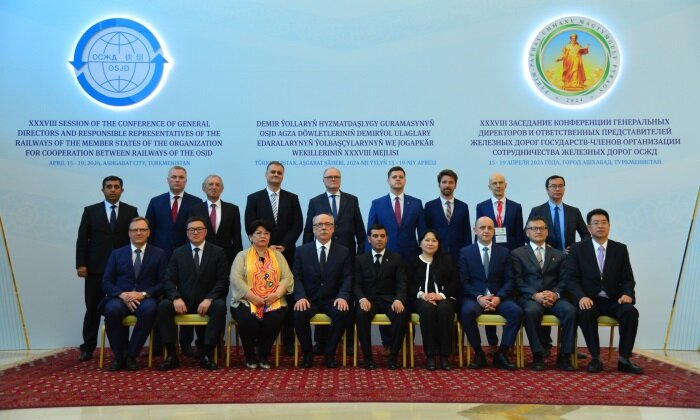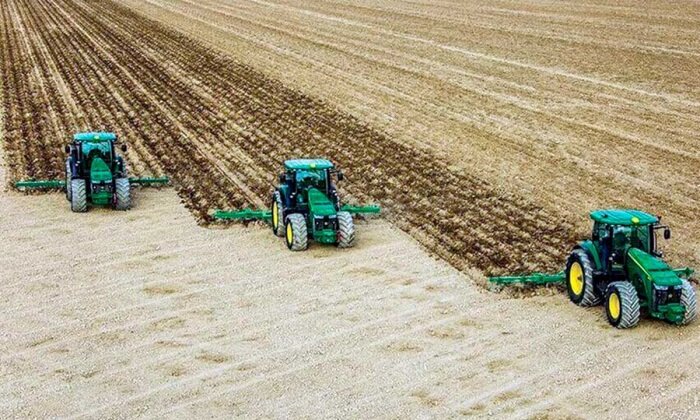The scientific expert commented on how promising technology developments in waste management had been applied in Turkmenistan.
 On February 16, an author of CentralAsia.news, well-known Turkmen scientist, Doctor of Technical Sciences Allaberdi Ilyasov appeared on the pages of the information source. In his new article, the specialist dwelt on recycling and plastic production as a huge industry that can be ‘green’.
On February 16, an author of CentralAsia.news, well-known Turkmen scientist, Doctor of Technical Sciences Allaberdi Ilyasov appeared on the pages of the information source. In his new article, the specialist dwelt on recycling and plastic production as a huge industry that can be ‘green’.
Polymers as recyclable materials
Plastic production is one of the fastest growing industries that increases by 5% annually on average. Various types of plastics are widely used in packaging, construction, motor industry, electronic engineering, etc. It is not by chance – the valuable physical and chemical properties of plastic far outweigh production costs, and decay resistant plastic is lighter than most other materials and can take any shape or colour. The issue of recycling plastic items that have lost their practical value arose together with the worldwide distribution of plastic products. The problem is that plastic items can take up to 100 to 400 years to decompose. As a result, traditional landfill disposal does not solve the problem.
Used plastic items cause enormous harm to the environment and animals, and the scale of the problem is daunting. Scientists found plastic fibres not far from Mount Everest and at the base camp. The highest microplastic concentrations were recorded in the base camp, which makes sense because mountain climbers and Sherpa guides spend most of their time there.
The distant regions of the Swiss Alps and the French Pyrenees, where microplastics were also found, were explored earlier. Most likely, these particles can be carried by the wind. Scientists knew about plastic contamination at the deepest point on the planet, the Mariana Trench, at a depth of 11 kilometres, but now they know about plastic contamination of Mount Everest, the highest point on Earth.
Since the 1950s, growth rates of plastic production has outpaced those of nearly all other materials. The financial damage caused by plastic pollution is enormous. In Asia and the Pacific alone, plastic waste costs tourism, fisheries and shipping industries US$ 1.3 billion annually. In Europe, about 630 million euros are spent each year to clean up beaches and coasts from plastic waste. Studies have shown that total financial damage to marine ecosystems caused by plastic contamination is estimated to equate to some US$ 13 billion annually.
Technological approaches in Turkmenistan
Plastic recycling and production is a huge industry that can be green. In Turkmenistan, environmental solutions in the petroleum refining industry require the development and implementation of highly efficient, low-cost petroleum refining technologies and new environmental protection systems. This principle is aimed at social development and economic growth mainly through the intensive margins without affecting natural resources and increasing environmental pollution levels.
Turkmenistan has promising technology developments in waste management. This idea is extremely timely for modern business. For example, in 2010-2011, Westport Trading Europe Limited (USA) built a mini-plant that produces polymer sand products for Turkmenistan’s construction industry. Roof and terrace tiles and paving slabs are much more utilitarian and durable than other materials and serve for at least 50 years.
This technology is unique in that the raw materials lie under our feet. These are various forms of polymer waste: packaging, plastic containers and worn-out household items. Certainly, effective recycling technologies exist to re-use polymers. As a rule, they require sorting, washing and drying plastic waste. Plastic recycling involves a series of processing operations: first, plastic items are washed and dried, then they are chipped and transformed into the recycled material – flex. At the last stage, flex is made into pellets in extruders.
Recycled pellets are in high demand. This is a case when demand exceeds supply. Thus, recycling plants can not only saturate the domestic market, but also export a brand new product. Granulite is used to manufacture the well-known plastic products: PET, barrels, canisters, household chemicals bottles, boxes, containers and plastic film. This recycled material is used for clothing insulation, stuffing for soft toys and sleeping bags, strapping and car upholstery.
Products for every taste
There are so many uses of recycled plastic that the sale of this product should raise no doubts. The product range of recycled plastic is varied. For example, sustainable clothing manufacturing. It becomes a great competitive advantage, and the major brands seek to gain it. In particular, sports clothing manufacturers. Recycled plastic is used to make recycled polyester for T-shirts, jeans and casual wear.
Plastic tables, chairs, benches and other items of furniture look no less elegant than those made of wood. Moreover, plastic furniture is resistant to moisture, fungi and insects; it is unpretentious and durable. Plastic furniture is ideal not only for home, but also for the street.
In 2011, a Uruguayan artist Juan Muzzi patented the world’s first bicycle made entirely from recycled plastic. Such bicycles were named Muzzicycles. They are not only environmentally friendly, but also very lightweight and shockproof. Road surfacing made from recycled plastic was developed in the Netherlands. Such roads are perfectly flat. They are easy to repair – you just need to replace one module with another. Moreover, plastic tolerates high temperatures; it heats up less than asphalt in the sun.
So far, this is only a concept that needs to be studied. However, it may well be that roads made of this material will soon become commonplace. Today, recycled plastic can found in almost every home and office. Staplers, hole punches, rulers and pen containers can be made from recycled materials. A number of office supply manufacturers have launched their eco-friendly product lines.





